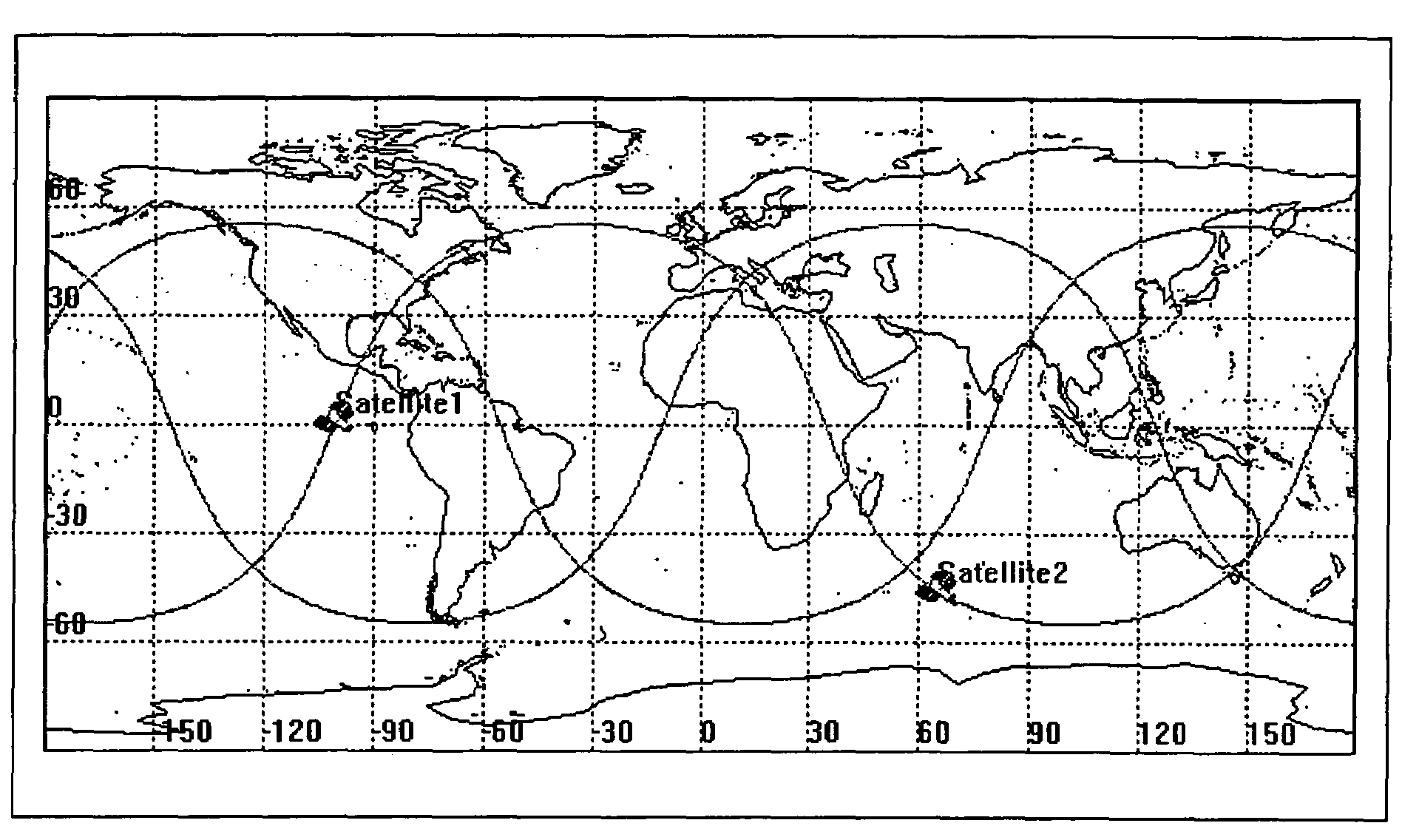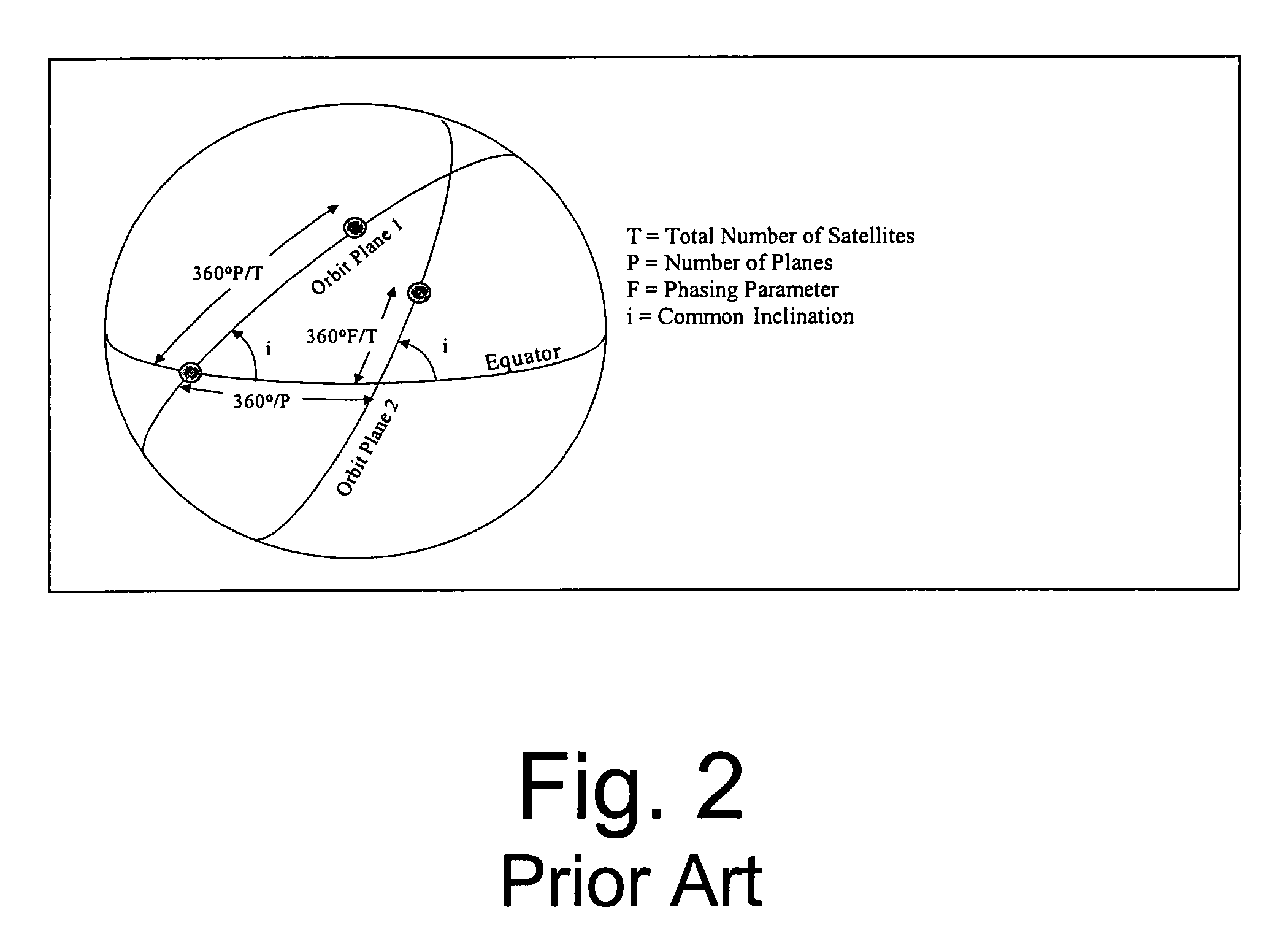Space based change detection using common ground track constellations
a technology of space-based change detection and common ground track, which is applied in the field of satellite constellations, can solve the problems of most satellite systems not being designed, distortion and blur of change detection images, and achieve the effect of reducing blurring and distortion of images, and reducing the number of satellites
- Summary
- Abstract
- Description
- Claims
- Application Information
AI Technical Summary
Benefits of technology
Problems solved by technology
Method used
Image
Examples
example 1
[0057]In addressing the problems noted above, an example involving two satellites orbiting in a common plane (See FIG. 3) will be used. For this example, the ground tracks of the two satellites are different, and images taken from each of the satellites can not be accurately combined to form a change detection image without performing some sort of image processing to remove the distortion and blurring.
[0058]FIG. 5 illustrates an example of a change detection orbit comparable to FIG. 3, yet FIG. 5 is designed according to the approach presented in this disclosure. For instance, as shown in FIG. 5, satellite 1 is the same as FIG. 3. However, satellite 2 is placed in a separate plane from satellite 1. This separate plane for satellite 2 has a right ascension of the ascending node (RAAN) of 300 degrees relative to the first satellite while the phasing angle between the two satellites is set at 240 degrees. The phasing angle defines the difference in angle between the two satellites. The...
example 2
[0062]In yet another example, a string of satellites that provides contiguous coverage over any point on earth for some predefined period of time is designed. The specification for this string of satellites is determined in the following manner.
[0063]First, the radius of coverage, ro, is determined for an individual satellite. FIG. 6 illustrates the geometry for this situation.
[0064]From this geometry, one finds that the coverage radius is given by:
ro=Re{π / 2−φ−a sin [(Re / a)cos φ]} (6)
[0065]The coverage radius is formulated in terms of the driving requirements: the minimum graze angle, φ, and the satellite radius, a, with respect to the center of the earth.
[0066]Second, the spacing between satellites, d, and the width of the contiguous coverage region, w, is determined by optimizing the width with respect to the total area coverage. Using a flat earth model (see FIG. 7), the optimal angle, γ, from the center of one satellite's coverage region to the edge of the overlapping coverage ...
PUM
 Login to View More
Login to View More Abstract
Description
Claims
Application Information
 Login to View More
Login to View More - R&D
- Intellectual Property
- Life Sciences
- Materials
- Tech Scout
- Unparalleled Data Quality
- Higher Quality Content
- 60% Fewer Hallucinations
Browse by: Latest US Patents, China's latest patents, Technical Efficacy Thesaurus, Application Domain, Technology Topic, Popular Technical Reports.
© 2025 PatSnap. All rights reserved.Legal|Privacy policy|Modern Slavery Act Transparency Statement|Sitemap|About US| Contact US: help@patsnap.com



